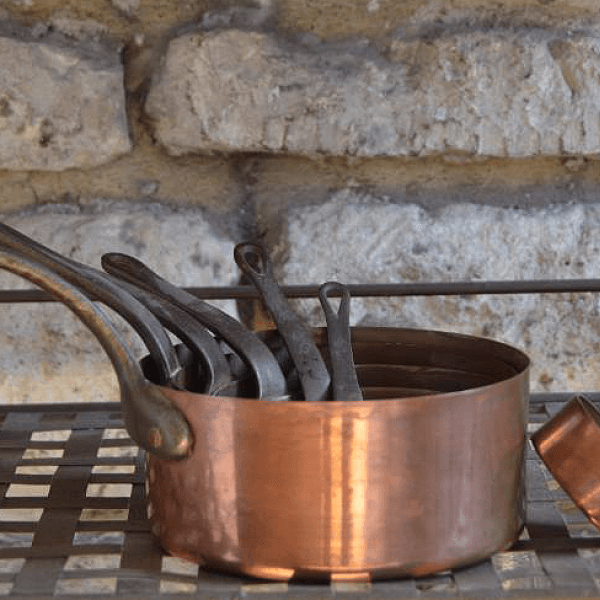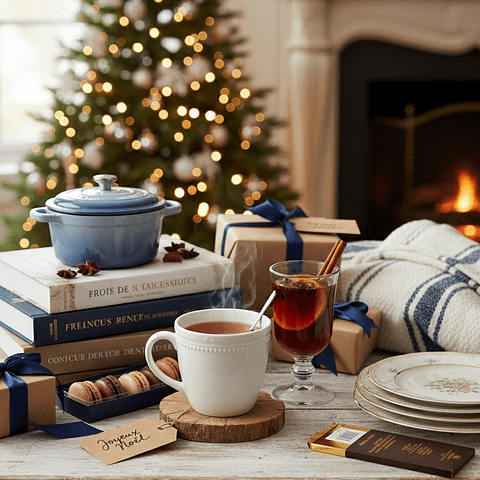What better time to brush up on your French culinary know-how than now? That's why we've put together a list of the culinary techniques and terms to have at your fingertips the next time you're whipping up a French feast or browsing a French menu.
Mise en Place
We're starting with an entry that - if you don't already use it - could change your cooking life forever. One of the first things you learn at culinary school, the art of mise en place is essentially the art of preparation.
Mise en place starts by reading your recipe thoroughly from start to finish. Then, go back to the beginning and start to prepare everything (and we mean everything) you need to make that recipe happen. That includes weighing out your ingredients, collecting together the pots, pans or dishes you might need, grating, zesting, peeling, chopping, gathering your tools (spoons, whisks, mixers etc.) and laying everything out within easy reach.
This may seem time-consuming, or perhaps you lament the extra washing up from all those individual bowls you're using for your preparations, but there is a very good reason that mise en place is used by chefs all over the world: once you come to the cooking, everything is smooth, efficient and hassle-free - and these are the things you definitely want in the kitchen! You won't suddenly realise you do not have a particular ingredient half-way through cooking, you'll have everything you need at your fingertips, you can more easily clean as you go, and you won't compromise the quality of the final result while you pause mid-way to weigh ingredients, locate an ingredient, or prepare others! Whether cooking or baking, mise en place should be your favourite French culinary technique.
Sauté
Did you know that sauté is actually a ballet term? It means a jump in which the dancer jumps up and lands in the same spot. So what has that got to do with sauté in cooking? Well, when you sauté ingredients, you usually heat them quickly on a high heat in a little fat or oil, and the ingredients must be moving all the time - or jumping, if you favour the technique of quickly flicking your pan to make the ingredients 'jump' or...sauté!
Déglacer
Déglacer is to deglaze - an instruction you will see in lots of recipes where the tasty little bits stuck to the bottom of the pan (often after frying meat) shouldn't go to waste! When deglazing, a little liquid - often wine, but stock or water can also be used - is poured into the pan to collect up the juices (known as the fond) and reincorporate their flavour back into the recipe without losing them down the drain! This liquid is then simmered while the bottom of the pan is scraped to release all those concentrated flavours.
En Papillotte
En papillotte is a great technique to have in your arsenal and is particularly useful for fish - which is often overcooked! In this method, the fish is placed on a baking / parchment paper with a few drops of oil or a little butter and any other ingredients, and wrapped into a little pocket or parcel to be baked. The benefit of this quick and simple method is that the fish is steamed to perfection - which also makes it healthy too!
Bouquet Garni
The bouquet garni or "garnished bouquet" is an aromatic bundle of herbs that adds a whole lot more flavour to things like stock, soup, hearty stews and casseroles. A bouquet garni is classically made up of thyme, bay and parsley. To make your own, simply gather together a little bundle of these key herbs (though you can also add rosemary if you like!) tie together with kitchen string, and add the bouquet to the pot where indicated in the recipe. Remove before serving and you're done! Bouquet garni work best fresh, but you can also make one from dried herbs, sealed in a square of muslin and tied with string. For this, use 1tbsp parsley, a tsp of thyme, and one tbsp of dried, ground bay leaf.
Demi-Glace
A demi glace - which you might know as demi glaze - is a very concentrated stock, made by reducing and reducing until you have a thick, rich flavour-packed brown sauce. This can then be used as a base for another sauce, or by itself. Traditionally a demi-glace is made using veal stock and Espagnole sauce, though beef stock can also be used. Due to the labour-intensive nature of making a traditional demi-glace, chefs often use ready-to-use concentrates to simplify the process and end up with what Julia Child termed a "semi-demi-glace."
Bisque
One for the seafood lovers, bisque is a term you might see on some classic French menus and not be quite sure exactly what it means, culinarily speaking. A bisque is a smooth, creamy soup which has been based on a broth made from crustaceans such as lobster, langoustine, crayfish, crab or shrimp. Essentially, all the flavour from the seafood should make it into the soup, but the soup itself should be smooth.
Mirepoix
Used as a flavourful base for a variety of dishes, mirepoix is a trio of diced vegetables, braised or slow-cooked over a low heat to bring out all the natural flavour and sweetness of the vegetable and thus enhance the final dish! The classic trio is onion, celery and carrot - you would use 2 parts onion to one part celery and carrot, for the traditional mix.
Confit
The word confit has its roots in the French confire, which means "to conserve", and as a French culinary term refers to anything that has been slowly cooked on a low temperature in oil, grease or even sugar water to conserve it (with the bonus that it becomes absolutely delicious, of course!) Confit is a southwestern French specialty, but you will see confit de canard or duck confit on menus all over the country - and for good reason! Once made, the confit is then stored in its fat, in a cool, dark place and can last for months - originally, the technique was a way of preserving meats for a long time without refrigeration. Ingenious and tasty!
Coulis
Just what is a coulis? We all know it's great for decorating plates and adding a bit of colour to deserts, but the other great news is - making coulis is extremely easy. Let's take a classic, of course!
Raspberry Coulis
200g raspberries
1tbsp of powdered sugar (confectioner's sugar)
A couple of tablespoons of water, or lemon juice if preferred
Put all the ingredients into a pan and heat on a low to medium flame until the raspberries begin to break down. If you want a coulis that's more runny, add water a little at a time until you have the consistency you prefer. You can also adjust the sweetness to your taste too - you're the boss!
In a bowl, use a stick blender to briefly purée the raspberries - what you don't want is to purée it too much, as the seeds will be sliced up and might end up in the finished coulis, which can also discolour that vibrant deep pink you want!
Pass the coulis through a sieve to the remove seeds, pour out and keep in the fridge until you need it.

